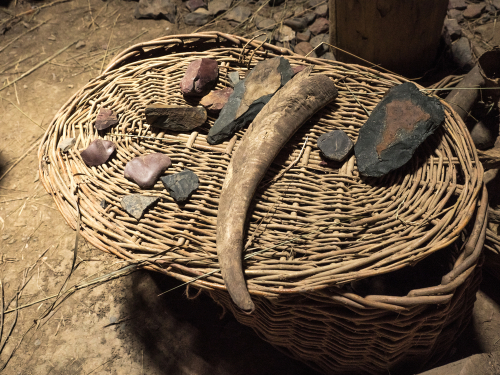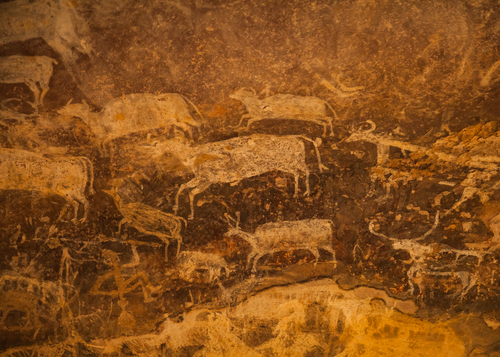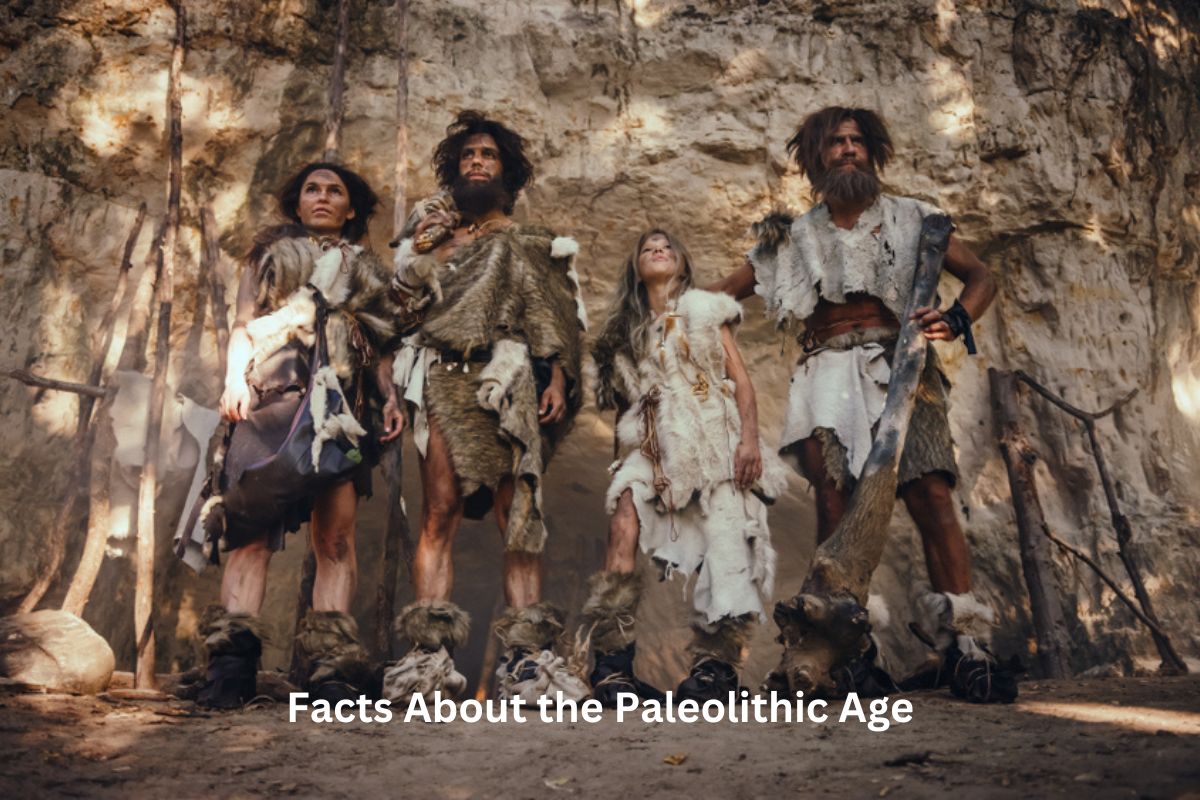The Paleolithic Age, also known as the Stone Age, represents a remarkable chapter in human history.
Spanning millions of years, this prehistoric era witnessed the emergence of early Homo sapiens and the development of fundamental elements of human existence.
From the mastery of stone tools to the control of fire, the creation of art and symbolism, and the profound impacts of migration and adaptation, the Paleolithic Age laid the groundwork for the societies and cultures that would follow.
In this introduction, we embark on a journey through ten key facts that illuminate the rich tapestry of this ancient epoch.
Paleolithic Age Facts
1. Stone Age period
The Paleolithic Age, also known as the Old Stone Age, is one of the earliest and longest periods in human history, lasting for approximately 2.5 million years.
It is characterized by the use of stone tools and marks the beginning of human technology and tool-making capabilities.
Also Read: The Stone Age Timeline
The Paleolithic Age is further divided into three subperiods: the Lower Paleolithic, the Middle Paleolithic, and the Upper Paleolithic, each marked by technological and cultural advancements.

2. Hunter-gatherer lifestyle
Paleolithic humans were primarily nomadic hunter-gatherers, which means they relied on hunting animals and gathering edible plants, fruits, nuts, and roots for their sustenance.
This lifestyle required a deep understanding of the environment, the seasons, and the behaviors of animals and plants. It also necessitated mobility as groups followed the migration of animals and the availability of resources.
Also Read: Timeline of the Paleolithic Period
Hunter-gatherer societies had a relatively simple division of labor, with men typically responsible for hunting and women for gathering. However, roles could vary depending on the specific culture.
3. Stone tools, like hand axes
Stone tools were the primary implements used by Paleolithic humans for various tasks, including hunting, butchering, woodworking, and cutting plants.
The earliest stone tools, such as choppers and flakes, date back to the Lower Paleolithic and were made by striking one stone against another to create sharp edges.
As the Paleolithic progressed, tool technology advanced. Hand axes, for example, were crafted during the Acheulean tradition of the Lower Paleolithic and were more sophisticated than earlier tools. They were likely used for both cutting and as weapons.
Over time, during the Middle and Upper Paleolithic periods, tools became more refined, with the development of blades, spears, and specialized implements for various purposes.
4. Control of fire
The control of fire was a pivotal development during the Paleolithic Age, with evidence suggesting that early humans learned to control and use fire around 1 million years ago.
Fire had several critical implications for early human societies. It provided warmth, which was essential for survival in colder climates and during harsh winters. Fire also served as protection from predators, as its light and heat could deter dangerous animals.
Perhaps most importantly, fire allowed for the cooking of food. Cooking made food more digestible and nutritious by breaking down complex molecules, reducing the risk of food-borne illnesses, and increasing the availability of energy from the same amount of food. This had profound effects on early human nutrition and overall health.

5. Cave art and symbolism
The Paleolithic Age saw the emergence of artistic expression in the form of cave paintings, carvings, and various symbolic artifacts.
Prominent examples of Paleolithic art include the Lascaux Cave paintings in France and the Altamira Cave paintings in Spain, both of which depict animals, human-like figures, and abstract symbols. These artworks provide insights into the spiritual and cultural beliefs of early humans.
Some artifacts, such as the Venus figurines, small sculptures of women with exaggerated features, are thought to have had symbolic or ritualistic significance, though their exact purpose remains a subject of debate among archaeologists.
6. Human migrations
Over the course of the Paleolithic Age, early humans gradually migrated from their African homeland to other parts of the world.
These migrations were driven by a combination of factors, including changes in climate, the search for new sources of food, and the curiosity and adaptability of early humans.
As humans spread to different regions, they encountered diverse environments, flora, and fauna, which in turn influenced the development of their cultures and technologies. For example, humans in different regions developed distinct tool-making techniques and adapted to local resources.
7. Simple social structures
Early Paleolithic societies had relatively simple social structures. These were typically small, nomadic groups consisting of extended families or small bands of individuals.
Cooperation was essential for survival, as these groups relied on collective hunting and gathering. Social roles were often based on age and gender, with men typically responsible for hunting and women for gathering, but these roles could be flexible depending on the group’s needs.
Leadership may have existed in the form of respected elders or individuals with specialized knowledge, but formal hierarchies as seen in later civilizations were absent.
8. Development of clothing
As early humans migrated to different regions with varying climates during the Paleolithic Age, they developed clothing made from available materials such as animal hides, furs, and plant fibers.
Clothing provided protection from the elements, such as extreme cold or heat, and offered a degree of camouflage during hunting.
The development of clothing was not only practical but also marked an important step in human adaptation to different environments.
9. Emergence of early language
The Paleolithic Age was a crucial period in the development of language and communication among early humans.
While we have no direct evidence of the specific languages spoken during this time, it is widely believed that early humans developed verbal communication to coordinate activities, share knowledge, and form social bonds.
Language would have played a critical role in the success of hunter-gatherer societies, allowing for the planning of hunts, sharing of information about the environment, and the passing down of cultural knowledge from one generation to the next.
10. Extinction of large mammals
During the late Paleolithic period, there was a significant decline in large mammals, known as the Pleistocene megafauna. These animals included species like mammoths, saber-toothed cats, and giant ground sloths.
The causes of this megafauna extinction are a subject of debate among scientists, but multiple factors likely played a role. These factors include climate change, habitat loss due to human activity, and overhunting by early humans.
The extinction of these megafauna species had a profound impact on ecosystems and may have influenced changes in the diets and lifestyles of Paleolithic humans as they adapted to the loss of these large game animals.
